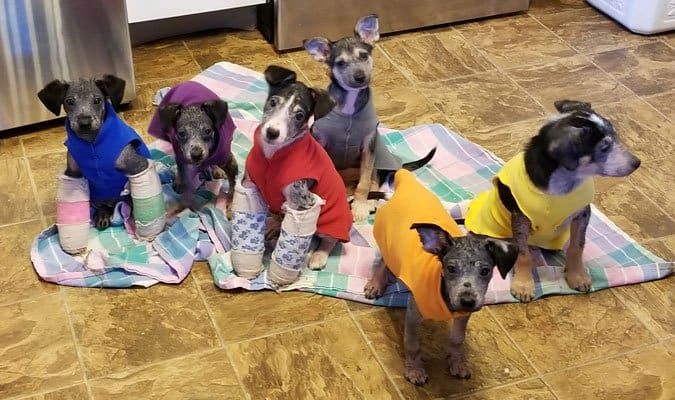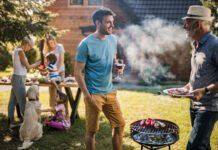First and most importantly, some recalls:
The November 2018 Pet Food Recalls
Columbia River Natural Pet Foods is recalling some frozen raw diets for dogs and cats due to contamination with Listeria monocytogenes.
I mentioned a few weeks ago that several dry dog foods had been recalled due to overages in the amount of vitamin D they contained. Curiously, there have been a number of others. On November 27, Sunshine Mills recalled a number of products for the same reason (potentially dangerously high levels of vitamin D). The products include certain varieties of Evolve, Sportsman’s Pride, and Triumph dry dog foods. (See the link for specific date/codes and varieties).
On November 29, yet one more: Certain lots of ELM Chicken and Chickpea dry dog food have been recalled for excessive vitamin D.
See this link (to my previous post) for more information as to why excessive vitamin D is dangerous.
Volunteer Work in the Aftermath of Camp Fire
In my neck of the woods, we still have a huge ongoing mess to sort out with trying to reunite animals with their people following the devastating Camp Fire. Currently, there are three temporary emergency shelters that are caring for hundreds of dogs and cats (and other animals). It’s hard to get exact figures, but more than half of the animals have not yet been identified by any owners, for many reasons. Some people whose homes burned have had to move out of the area, or went to stay with relatives out of the area. Some people are staying in locations where they can’t have their pets. There may be people who have assumed that their pets perished in the fire, and who haven’t come to look for their pets; there may be pets in the shelters who belong to people who perished in the fire (the human death toll is at 88).

The job of caring for all these animals has fallen to volunteers. While the facilities are imperfect (understatement) and there has been an incredible amount of confusion and change in protocol on almost a daily basis, the incredible fact is that people keep coming out of the woodwork to help the animals. In the first few weeks, it was largely people who were already part of the North Valley Animal Disaster Group (NVADG, referred to locally as “nav-dag”).
As the thick smoke settles over the whole north half of the state, the volunteer force started to shift to people whose places of work were closed due to the unhealthy air quality. Of course, those people were supposed to stay indoors; that was the official recommendation of state and county public health departments. But teachers from K-12 schools that were closed showed up in great numbers, as did professors from universities and community colleges. It may be that no one realized exactly how many teachers had been showing up to walk dogs and clean cat boxes until the week after Thanksgiving, when many schools reopened – and for a few days, none of the shelters had quite enough people to help.
But the cavalry arrived in the form of volunteers and trained animal emergency responders from national animal welfare organizations. Consultants and hands-on help came from the Humane Society of the United States, Red Rover, the International Fund for Animal Welfare, American Humane Association, and the ASPCA. Employees and volunteers from other animal shelters in the north state have been arriving in twos and threes and have been sleeping in tents and cars and working 12-hour days.
I’ve worked alongside folks from the Humane Society of Silicon Valley and the San Francisco SPCA, who were here on their own dime and receiving no compensation, and barely any thanks or recognition. “It’s for the animals,” I heard again and again as I thanked people for their help.
It’s been an emotional roller coaster of frustration and sadness and exhaustion, occasionally punctuated with utter joy when someone shows up to recover their dog or cat. We even experience the joy third-hand; we can start crying tears of happiness if we hear about a reunion from another volunteer who witnessed it. The happy stories make it all worthwhile; we all just want to see these stressed animals get back into the hands of people who love them.
My Mange-Ridden Foster Puppies
Last week, I introduced you to my latest foster puppies, who I took on against all my better judgment. I have been depleted – financially, emotionally, and in terms of time, but I just knew these helpless, pathetic little pups would not get all the help they needed to recover in the shelter. They especially wouldn’t get what they needed in the middle of the fire crisis.
I’m happy to report that the remaining six puppies are recovering super nicely from their kennel cough; we have just a few more days of doxycycline to get through.
Their demodectic mange has taken the puppies through the red and irritated stage, the stinky and yeasty and infected stage, the scabby and crusty first stage of recovery, the smooth and hairless stage, and now they are just starting the hair regrowth stage. A couple of puppies are still bald; a couple more are starting to regrow hair in funny spots and patches. They finally are acting like actual puppies, playing and chewing on everything they can reach, and eating actual dog food (as opposed to the tuna and scrambled eggs and cooked hamburger and Thanksgiving turkey and anything else I could get them to eat when they were so sick).

We’re not completely out of the woods, though. As I mentioned last week, four of the six puppies display a hyperflexed stance, walking on their “wrists” rather than standing upright on their feet. Given the state of severe malnourishment they were in when they were brought into the shelter, it was no surprise that they had almost no muscle, and their bones, tendons, and ligaments are weak. Most shelters have seen this in many malnourished animals; the animals usually recover over time with good nutrition and appropriate exercise (not too much, not too little).
One day, though, as I was preparing their lunch, I noticed something new: one of the pups had a front leg that was bowing laterally to the outside at the wrist. He looked bowlegged in the front! When he sat, his front legs looked fine. When he stood, even though he is still a slim pup, the weight of his shoulders, neck, and head was apparently too much for those weak carpal joints, and the instability started causing first one foreleg, and then the other, to bend like Gumby.
I took this pup to the shelter to consult with the RVT. We decided to splint his front legs as a protective measure, to keep the bending and bowing from permanently damaging his joints and deforming his leg bones, until they are strong enough to carry him without bending.
A few days later, a second pup’s legs started bowing and knuckling to the outside at the wrist, so she has joined her brother in braces.
I’m trying to find a veterinarian who will help us with the overall medical management of the whole litter. I would like to find someone, or a practice with several doctors, who will help advise us on the best diet and exercise plan for these vulnerable pups, as well as a plan for protecting those legs. I’ve reached out to people at the vet school at the University of California at Davis, about 70 miles away, and a few other people who might know where we can get this unfortunate little bunch some help as a group.
Some of you have sent donations to help with their medical care, and the Northwest SPCA and I are very grateful. The support will help ensure that we will be able to do everything we can to see them recover fully from the terrible start they got in life. For all they’ve been through, they are sweet and sassy little things, and when they have a little more hair, they are going to be darn cute. I know we will find them terrific homes, as soon as they are well on the path to health.






